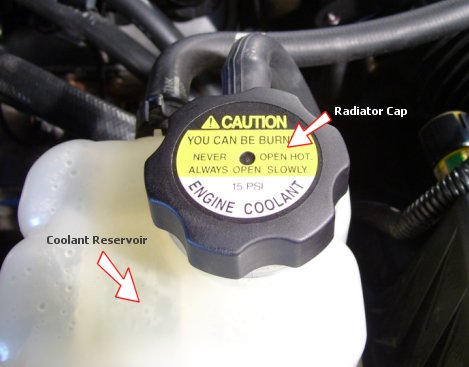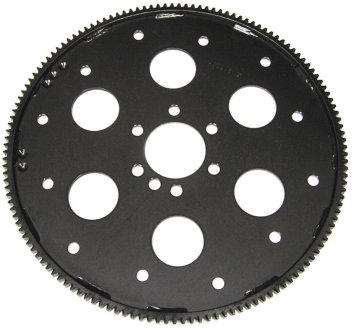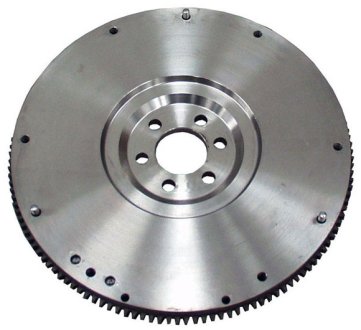When buying a used car, without a doubt, first check a car history records. Some cars may have been flooded - worthless to buy. Others were written off by insurance due to serious accident. Many cars have altered mileage, and so on.
Follow this link to learn more How to check a used car VIN history report
If looking at the used car you noted any problem with the engine (e.g: major oil leak or strong noise) or any abnormal behavior don't let the salesperson to mislead you. They may tell you, for example, that the leak is "overflow from the recent oil change" or "the noise will disappear later by itself or something like this". Generally, such defects never disappear by itself. If you have hesitation, move on - there are so many cars available.
Ask for service records if they are available. Look for oil change intervals - was the oil changed regularly? I mean driving 1,000 miles over suggested oil change interval won't cause a big damage, but, for example, 9,000-12,000 miles (15,000-20,000 km) without an oil change may cause serious engine problems in the future.
Keep in mind, that modern engines, especially those with turbo charger are extremely sensitive to the oil change interval
How to check the oil
Park the car on a level spot, turn the engine off and set the hand brake. Locate the engine oil dipstick, pull it out, wipe it off with clean cloth and insert it back. Pull it out again and have a close look. If you've never checked the oil level before, follow this link for detailed guide How to check engine oil.
If you find the oil is completely black (although for the Diesel engine black oil is normal) and (or) the oil level is very low (left picture) - suspect excessive oil consumption and (or) lack of maintenance. In either case the engine will more likely to have problems in the future. Another sign of poor maintenance would be dark stains (carbon deposits) covering the oil dipstick along its length.
Well maintained engine will more likely to have cleaner oil and the proper oil level (right picture), although this doesn't necessarily mean that the engine is in good shape; the oil just could have been changed recently.
Look for leaks
Look for possible oil leaks. If the engine looks very clean and shiny it doesn't mean it has no leaks. Probably it has been shampooed. Most of the dealers shampoo the engine before putting a used car for sale. But there is the trick - look underneath the vehicle using your flashlight. Check the lower part of the engine and transmission. Everything has to be dry. There might be slight wetness which is not that bad, but there should be no leaks. See any leaks? Oil drops on the parking space? - this may indicate a problem.
Note, the water condensations dripping from air conditioner drain tube is normal. This drain tube is usually located on the passenger side of the firewall.
If it's possible, look at the internal parts through the oil filler neck (Don't open the oil cap while the engine is running!)

Dirty engine Clean engine |

Oil sludge inside the engine |
With the engine turned off, try to open the engine oil cap and look inside through the oil filler hole. Use a small flashlight. If it's possible to see any internal parts there, check their condition. What you are looking for is the oil sludge - this thick black buildup on internal parts you can see on the lower photo (this is how the sludged up engine looks inside, with the valve cover removed). If you see a lot of black oil sludge buildup inside the engine it means that either the engine oil hasn't been changed for a long time, or the engine has been overheated, or poor quality oil was used.
In either case, avoid buying such a car - sooner or later it will have serious engine problems.
Well maintained engine usually looks pretty clean inside; if you check few cars of the same model it's easy to see the difference. However, again, if the engine looks clean inside it doesn't mean that it has no other possible problems - as a last step, have the vehicle inspected by a mechanic of your choice. |
If you find evidence of badly made repairs, avoid any such car.
 | If you find evidence that the engine has been repaired with inaccuracy (too much bulging of gasket maker, as in the image, loose bolts, stripped treads, altered wiring, broken fastenings, missing bolts or covers, etc.), avoid buying such a car because quality repair is possible only by very skilled mechanics. Just imagine how the engine has been repaired on the inside if it looks this way on the outside? |
Timing belt

Many cars, especially with four-cylinder engine, have a timing belt that needs to be replaced at a certain interval - usually between 60,000 and 100,000 miles (100,000 and 160,000 km). If it wasn't replaced by the previous owner, you will have to do that. It's difficult to check it on the car because the timing belt is protected by the protective covers. The only way is to ask the previous owner if they have a receipt. Sometimes though, dealers place the timing belt replacement sticker somewhere on the top of the engine (see the picture) that indicates the date and the mileage when the belt was replaced.
Check the smoke
 Blue smoke at start-up may indicate engine problems - avoid such a car. Black smoke means the engine consumes too much gas - possible problem with fuel injection. Blue smoke at start-up may indicate engine problems - avoid such a car. Black smoke means the engine consumes too much gas - possible problem with fuel injection.
Normally, there should be no smoke at all (Diesel engine may have slight black smoke at a cold start - it's normal). A small amount of white water steam and water condensate dripping from the exhaust is normal. |
Listen for noises when the engine is running
There shouldn't be strong noises, coming from the engine under any condition with no matter is the engine cold or hot. By the way, knocking or tapping at a cold start is one of the indicator of poor maintenance. Knocking, tapping or rattling noises indicate excessive wear of internal engine parts. Whistling may be caused by loose belt. If the engine makes too much noises, avoid buying such a used car (however, Diesel engines are always more noisy, it's normal).
Look at the instrument panel
There should be no warning lights such as "low oil pressure", "low oil level", "overheating", "check engine" or "service engine soon" etc. on the instrument panel when the engine is running.
I receive lot of questions about "check engine" or "service engine soon" light. You may find the explanation what "check engine" means in the article Why my "check engine" light is on
If the car has "check engine" or any other warning light coming on while driving, have the proper diagnostic done before deciding to buy the car; in some cases the problem could be very costly to repair.
Test drive
Try to test drive a car for as long as you can. Try to accelerate, decelerate, take it on the highway if it's possible. The more you drive, the more chances you discover possible problems. If it's your first car, try to test drive few different cars of the same model to have better idea. If you feel anything that may indicate possible engine problem (e.g vibrations, stumbling, misfiring, delay during acceleration, rattling noise, smoke, rough idling, etc.) avoid buying such a car. If you have any hesitation about the way the car drives, shop around, there are plenty of used cars available. Sometimes a sales person may try to push you to buy a car today and now because "tomorrow I won't give you this price" or "I have the customer who will buy this car tomorrow" - Don't rush, take your time to think, the more you shop around, the more chances to find the right car for the right price.
Mechanical inspection
As a last step prior buying a used car, have the vehicle inspected by an experienced mechanic of your choice.
Do's and Don'ts
- Don't buy a car if you see a smoke from exhaust pipe - only the water steam and water condensate dripping from the tail pipe is OK.
- Don't buy a car if engine knocks or works too noisy.
- Don't buy high-mileage cars. I'd recommend to avoid cars with more than 145,000 - 150,000 miles (230,000 - 240,000km)
- Don't buy cars that have some engine problems even if it seems to be easy to repair
- Do hire someone knowledgeable to have a vehicle inspected before you buy it.
If you are looking for more detailed technical information
If you want to find more technical information about you car such as all kind of diagrams (transmission diagram, engine diagrams, vacuum line diagram, electrical diagram, etc.) repair information, specification, fluids type, maintenance schedule, component location, service bulletins and so on, there is a website which for a small fee allows you to browse all such an information for almost any car model on-line. To learn more visit this page:
Where to find technical information about your car
If this page is too complicated for you, check my other page, written in more simple, easy to understand manner:
How to check a car - simplified version.














































 Many cars, especially with four-cylinder engine, have a timing belt that needs to be replaced at a certain interval - usually between 60,000 and 100,000 miles (100,000 and 160,000 km). If it wasn't replaced by the previous owner, you will have to do that. It's difficult to check it on the car because the timing belt is protected by the protective covers. The only way is to ask the previous owner if they have a receipt. Sometimes though, dealers place the timing belt replacement sticker somewhere on the top of the engine (see the picture) that indicates the date and the mileage when the belt was replaced.
Many cars, especially with four-cylinder engine, have a timing belt that needs to be replaced at a certain interval - usually between 60,000 and 100,000 miles (100,000 and 160,000 km). If it wasn't replaced by the previous owner, you will have to do that. It's difficult to check it on the car because the timing belt is protected by the protective covers. The only way is to ask the previous owner if they have a receipt. Sometimes though, dealers place the timing belt replacement sticker somewhere on the top of the engine (see the picture) that indicates the date and the mileage when the belt was replaced.  Blue smoke at start-up may indicate engine problems - avoid such a car. Black smoke means the engine consumes too much gas - possible problem with fuel injection.
Blue smoke at start-up may indicate engine problems - avoid such a car. Black smoke means the engine consumes too much gas - possible problem with fuel injection. 

























